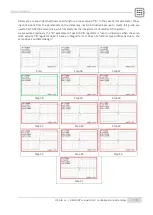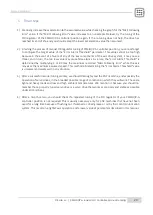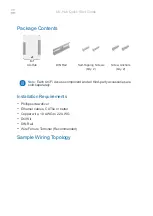
www.cs-lab.eu
CS-Lab s.c. | CSMIO/IP-A 6-axis CNC controller. Manual tunning
18
Description of "kI" term tuning:
Step 36 - 38
We increase the "kI" by 0.02, the value of "Mkit Following Error" decreases.
Step 39 - 45
Further increasing of the "kI" by 0.02, the value of "Mkit Following Error" does not decrease.
Step 46 - 47
Further increasing of the "kI" by 0.02, the value of "Mkit Following Error" does not decrease, axis
resonance appears.
5)
The last parameter, "kD" is very rarely used. It is applied only for not very sensitive and sluggishly re-
sponding servo drives, where re-tuning of the current and velocity PID regulator of a servo drive did not
improve anything. We should remember that using the "kD" parameter may not solve issues with to low
sensitivity and sluggishness of a servo drive, resulting from its wear or factory properties.
The "kD" is the value of integral term gain of position PID regulator. In simplification, the higher value of
the "kD" parameter and the faster change of "Mkit Following Error", the stronger suppression of position
PID regulator proportional and integral term activity. This has a stabilizing effect on the operation of
position PID regulators, which in turn allows to some extent to increase the
"kP" and "kI" values. As a
result, a servo drive will react stronger and more accurately to slower movement orders and slightly
weaker and less accurately to fast movement orders.
•
Too high value of "kD" parameter causes servo drive reaction time is shorter and "Mkit Following
Error" increases. Extremely high values of "kD" parameters may cause jerking (jumping) move of
an axis.
The "kD" parameter should be used only when it is necessary. For servo drives that work correctly, this
parameter does not need to be used. Unjustified use of this parameter may reduce the servo drive's
response time and increase the value of "Mkit Following Error".



































